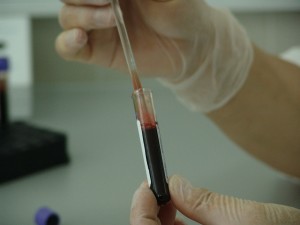“Potentially unethical.”
That’s how one expert described an Italian scientist’s plan to perform a “head transplant” by severing two heads at the same time, then cooling and flushing out the ‘recipient’ head before attaching it to its new body with polymer glue.
That is “POTENTIALLY unethical?”
Making one person out of two, and throwing away the unused halves, is only “potentially” unethical?
Shock and awe.
* * * * *
Neuroscientist Sergio Canavero is undeterred by criticism, however. Canavero now reports that it’s possible to merge bone marrow, surgically cut with an ultra-sharp knife, when fusing one person’s head onto another person’s spine.
The Local, a website for Italian news in English, reports that Canavero’s research was published this month in the journal Frontiers of Research. Canavero, a scientist with the Turin Advanced Neuromodulation Group, explained that the operation would be made possible using special membrane-fusion substances called fusogens, which would be injected between the two stumps cut in the spinal chord. As proof of feasibility, he cited research conducted at the University of Dusseldorf, where rats had fully recovered use of their limbs after the procedure.
Canavero’s research goals came to light last year, when he published a paper in the June 2013 open source journal Surgical Neurology International. He cited what he called the “first successful primate head transplant,” which had been performed in 1970 by Dr. Robert White. According to Canavero’s report,
“The monkey lived 8 days and was, by all accounts, normal, having suffered no complications.”
Dr. Jerry Silver, a neurologist from Case Western Reserve University, was present for that 1970 experiment and remembers the story differently, however. Dr. Silver told CBS News last year,
“I remember that the head would wake up, the facial expressions looked like terrible pain and confusion and anxiety in the animal. The head will stay alive, but not very long…. When doctors attempted to feed the re-connected head, the food fell to the floor. It was just awful. I don’t think it should ever be done again.”
Dr. Silver calls the proposed human head transplant “bad science” and warns that it should never be attempted.
* * * * *
What does the Catholic Church teach regarding human head transplantation?
Canavero’s research is so grotesque and so outside the realm of common experience that I did not expect to find a quick answer in the Catechism of the Catholic Church. I was wrong, however; the Catechism DOES speak explicitly about experimentation on humans, and on the morality (or immorality) of organ transplantation. Here, from the section on Respect for the Person and Scientific Research, are paragraphs 2295 and 2296:
2295 Research or experimentation on the human being cannot legitimate acts that are in themselves contrary to the dignity of persons and to the moral law. The subjects’ potential consent does not justify such acts. Experimentation on human beings is not morally legitimate if it exposes the subject’s life or physical and psychological integrity to disproportionate or avoidable risks. Experimentation on human beings does not conform to the dignity of the person if it takes place without the informed consent of the subject or those who legitimately speak for him.
2296 Organ transplants are in conformity with the moral law if the physical and psychological dangers and risks to the donor are proportionate to the good sought for the recipient. Organ donation after death is a noble and meritorious act and is to be encouraged as a expression of generous solidarity. It is not morally acceptable if the donor or his proxy has not given explicit consent. Moreover, it is not morally admissible to bring about the disabling mutilation or death of a human being, even in order to delay the death of other persons.










